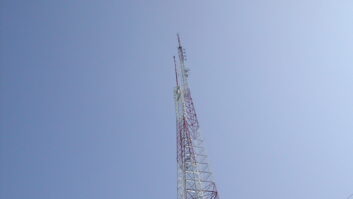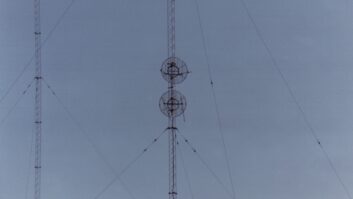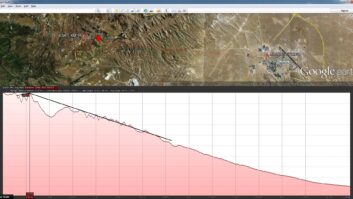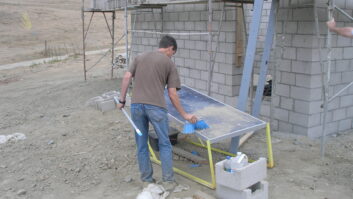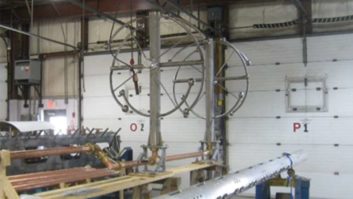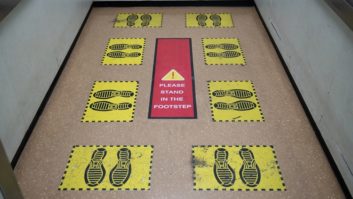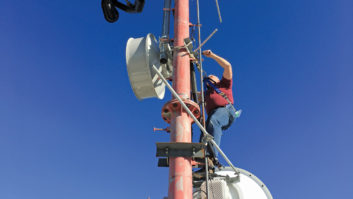A few days ago I marked my 10th anniversary at IMAS Publishing. For most of that time, I’ve filled the post of editor, then editor in chief, of the U.S. edition of Radio World.
It is the longest I’ve worked for one employer and the longest anyone has held the RW editor’s job in the company’s 30 years.
When Luci Cobo hired me, she discussed the reasons on this page, noting my background in broadcast equipment as well as journalism. She was kind in her comments; but her words also remain a succinct summary of the standards I use to judge how I’m doing:
“[Paul’s] journalism education and experience will help us to continue striving for that balanced, fair and honest coverage you’ve come to know and appreciate in today’s RW,” Cobo wrote in 1996, “and his experience on the manufacturing/distribution side will help us shore up the technical, equipment and product coverage throughout the rest of the paper.”
10 Years AgoWhat were we talking and writing about a decade ago?
The first issue on which I worked – as the managing editor under Editor in Chief Luci Cobo – included stories about Jacor Communications’ purchase of Noble Broadcast Group; the timetable for launch of satellite digital audio radio services, with discussion of “pioneer preferences” among the four contending companies; and tests of a Seiko FM subcarrier data system to disseminate travel information to wristwatches.
There was a profile of Stephen Dunifer, founder of Free Radio Berkeley and guru of the “micro” radio movement; a discussion of Millman’s Theorem by Harold Hallikainen; a review of the portable Tascam DA-P1 DAT recorder ($1,899) by Ty Ford; and a visit by Al Peterson to the Washington auditorium of Voice of America to watch the production of a radio drama starring Ed Asner.
Inovonics was giving away an “old radio” poster. Anna Mae Sokusky had just joined Netcast, an entertainment network on the Internet. Letters to the editor dealt with the “rebirth” of the MiniDisc format and the use of T1 for digital STLs. And the company Hicks, Muse, Tate & Furst had signed a deal that would help it toward its goal of growing a new company, Capstar Broadcasting Partners. The sale gave Capstar 50 stations in 14 markets and $49 million in annual revenue, according to BIA figures.The key phrase in that paragraph is “balanced, fair and honest.” That’s the gold standard for me. In an era when we are faced with information overload, openly biased “reporting” and vitriolic insults traded via listservs, Radio World occupies a special place in the industry, one I inherited but seek to maintain and nourish.
My aim is to serve U.S. radio broadcast engineers, owners and other managers by providing balanced, fair and honest coverage of technical and business trends. I intend for our content to have a positive impact in your life, as you experience it daily.
If our stories help you to advance in your job, work safely, enjoy your chores more, produce a better broadcast or converse intelligently with your professional peers, I’ve succeeded. If you smile because of a radio history piece or humor column, we’ve done our job.
One of my goals has been to provide a “marketplace of ideas,” and when I look at our expanded opinion section, our many Guest Commentaries and our publication of RW Engineering Extra, among other content, I’m pleased.
We are by no means perfect. But I’m proud that RW, more than any other publication, offers you space in our pages to tell us when we fail.
Like radio itself, we face competition now from more sources including new media. In that environment our staying power is even more gratifying. I’ve also had the satisfaction of seeing many of our ideas influence practices in other publications. Radio World has led through our often-imitated white papers; opinion pieces; coverage of people news and who’s buying what; our emphasis on real-world engineers; and our emphasis on the vital bridge between technology and management.
Meanwhile, non-technical publications, prone in the past to dismiss RW as “just for engineers,” now ignore RW at their risk. Consider digital radio and multicasting as just two examples of how, month after month, the topics we explore here are the same ones that “top brass” and decision-makers will have to confront soon, issues that literally can decide the business success of the industry.
My position has offered the opportunity to have interesting experiences – visiting radio stations, networks, satellite headquarters, the research facility at Ibiquity and the engineering lab at NPR, just to cite a few. However, memories of any job usually have more to do with people. So it is with me.
As I look back over 10 years, I recall reading letters addressed to me from Steve Allen and James Quello and the daughter of the late Jesse Maxenchs, who had been touched by my remembrances of her father. I remember the day I hit a $400 jackpot in a slot machine at the Stratosphere on an NAB trip. I remember bumping into James Earl Jones and meeting Bob Kingsley at conventions.
I also remember the morning Terry Hanley told me that an airplane had struck the Twin Towers in New York, five years ago this month, and minutes later watching fire engines scream down Columbia Pike outside my window, on their way to the Pentagon.
I recollect joking around with FCC Commissioner Rachelle Chong about her Star Trek collectibles; meeting with Gary Snow on his boat off North Carolina’s Neuse River; writing the letter inviting Skip Pizzi back to our pages; and suiting up for the IMAS Bluelines softball team.
I’m grateful to the publishers and editorial directors who have trusted me with the “senior” IMAS publication, which remains a key part of the IMAS business, and to the advertisers who support it. I also appreciate the fantastic team of contributors and columnists who make RW possible. They are too many to name, including several dear friends. But in particular I am grateful to the brain trust who provide constant editorial advice and opinions: Tom McGinley, John Bisset, Michael LeClair, Skip Pizzi, Cris Alexander, Leslie Stimson, Kelly Brooks, and, for strategic matters outside of editorial, John Casey, who has been more partner than publisher.
I could describe the lengthy mission statement for our publication, involving the many industry angles we cover from new products to regulation and new media. But my commitment to you, as long as I hold this job, is to do the following:
* Help the reader do his or her job.
* Celebrate the radio broadcast engineering profession.
* Report on people as well as hardware.
* Be open to all opinions.
* Build bridges between engineering and other management.
* Allow criticism of our publication.
* Value radio’s history.
* Be balanced, fair and honest.
Thank you for the opportunity to share part of your life every two weeks.





